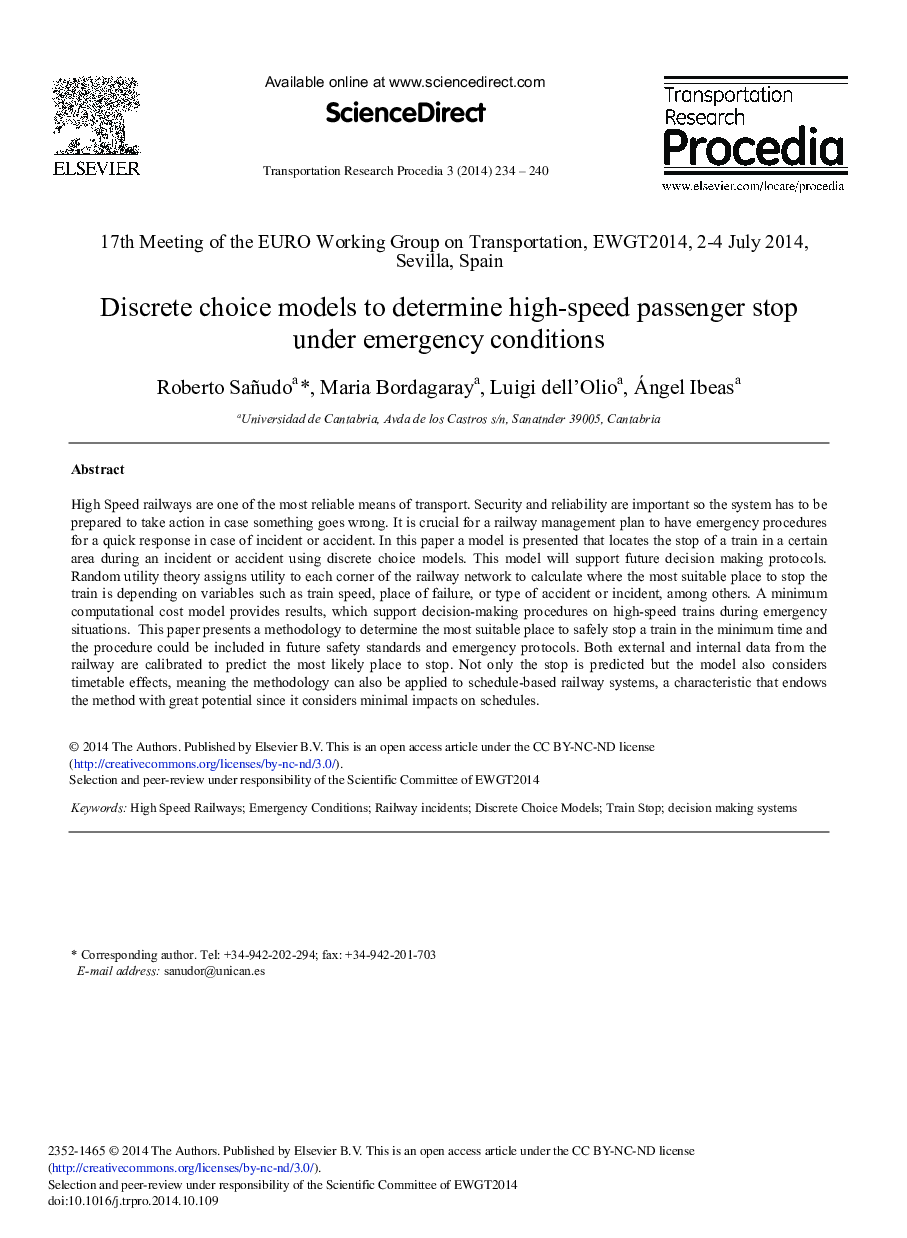| Article ID | Journal | Published Year | Pages | File Type |
|---|---|---|---|---|
| 1106401 | Transportation Research Procedia | 2014 | 7 Pages |
High Speed railways are one of the most reliable means of transport. Security and reliability are important so the system has to be prepared to take action in case something goes wrong. It is crucial for a railway management plan to have emergency procedures for a quick response in case of incident or accident. In this paper a model is presented that locates the stop of a train in a certain area during an incident or accident using discrete choice models. This model will support future decision making protocols. Random utility theory assigns utility to each corner of the railway network to calculate where the most suitable place to stop the train is depending on variables such as train speed, place of failure, or type of accident or incident, among others. A minimum computational cost model provides results, which support decision-making procedures on high-speed trains during emergency situations. This paper presents a methodology to determine the most suitable place to safely stop a train in the minimum time and the procedure could be included in future safety standards and emergency protocols. Both external and internal data from the railway are calibrated to predict the most likely place to stop. Not only the stop is predicted but the model also considers timetable effects, meaning the methodology can also be applied to schedule-based railway systems, a characteristic that endows the method with great potential since it considers minimal impacts on schedules.
